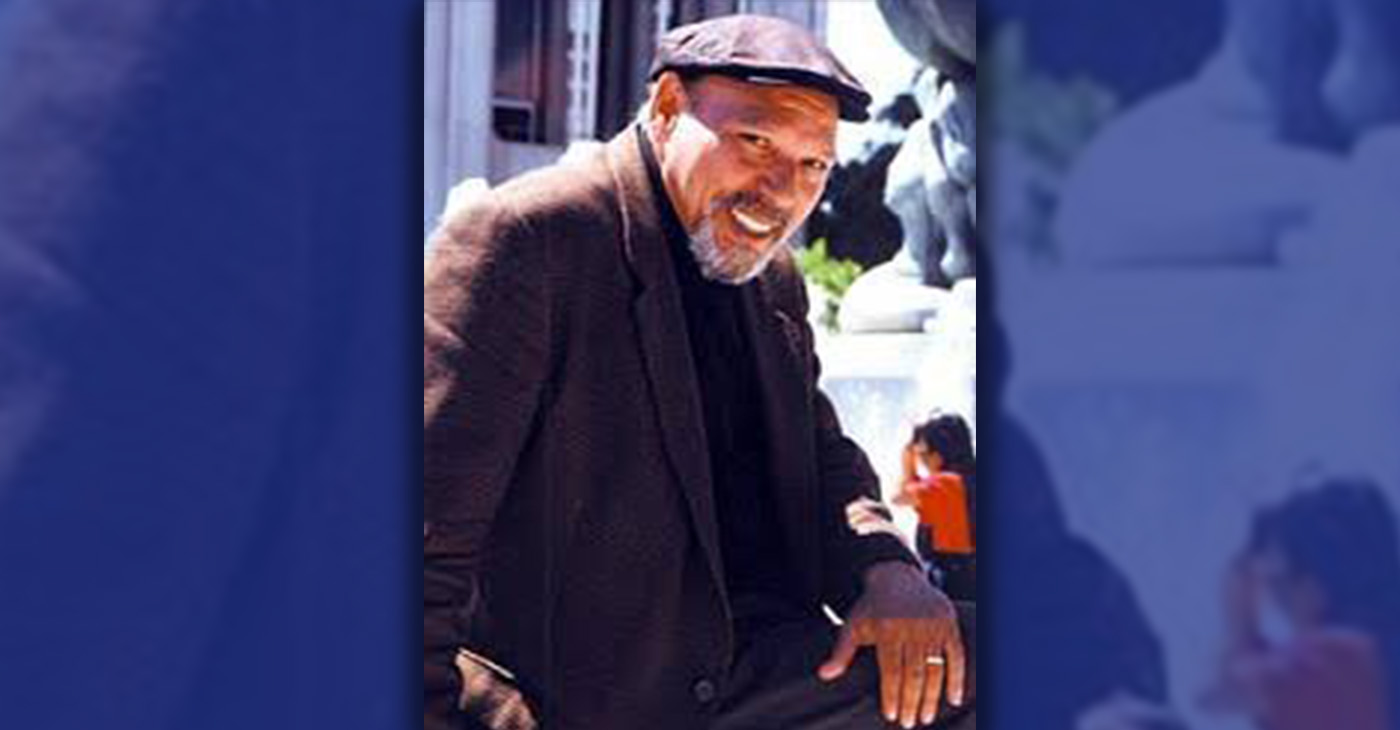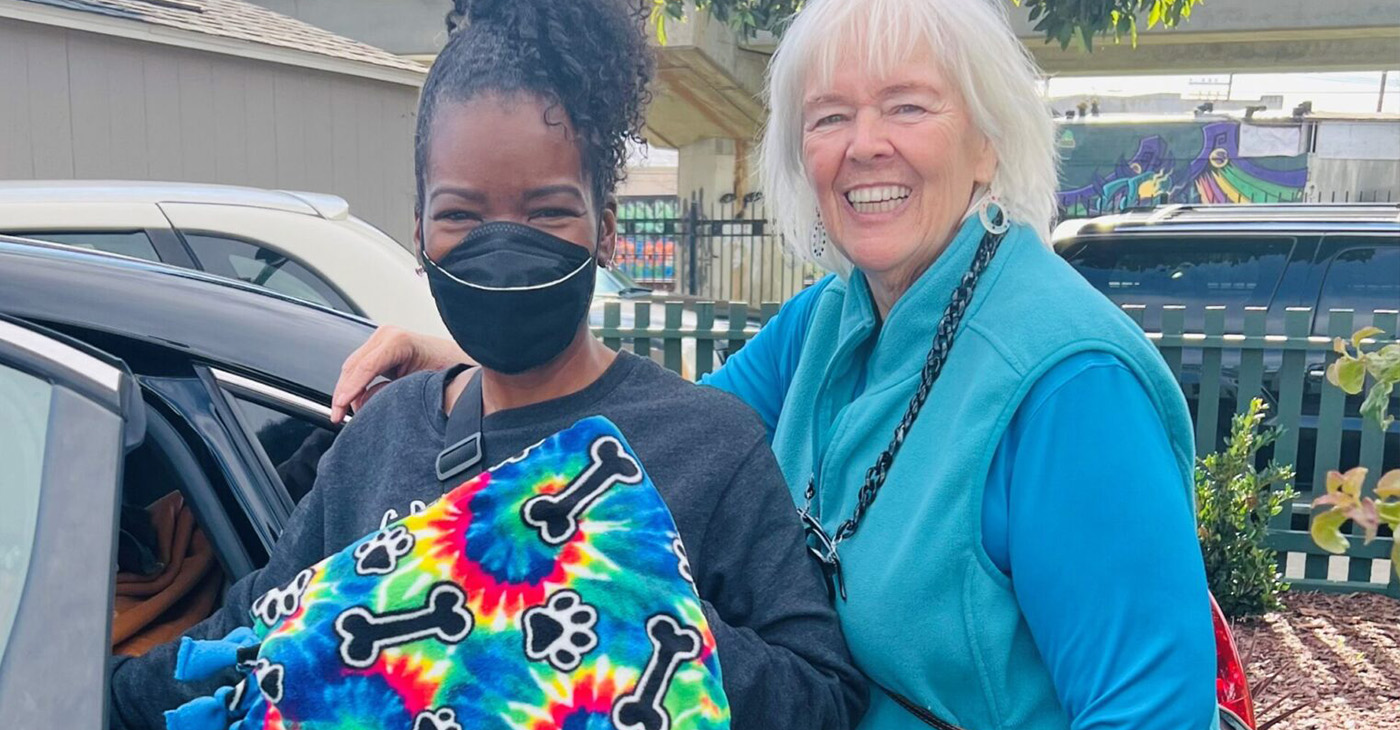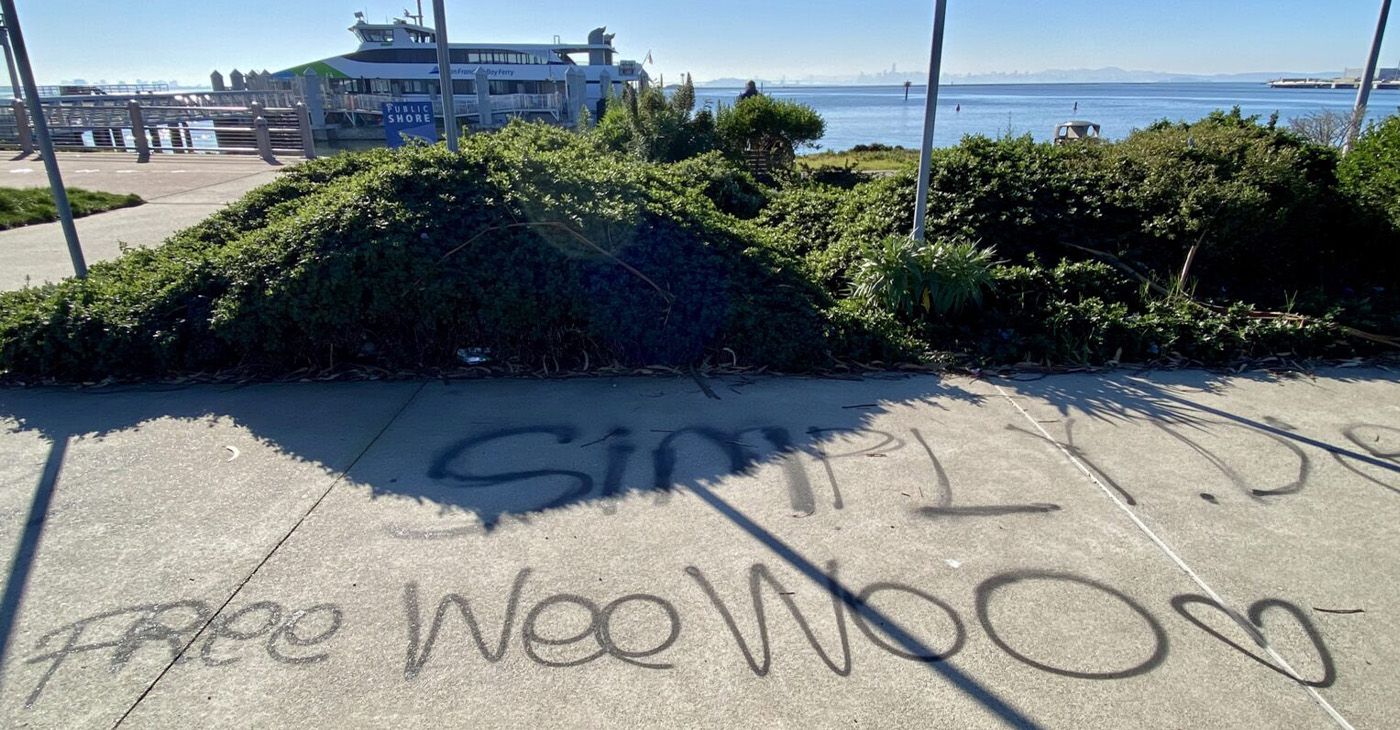Art
Freedom and Order: The Quilt Masterpieces of Gee’s Bend – Revisited
THE TENNESSEE TRIBUNE — A new exhibition has just opened at the Philadelphia Museum of Art: “Souls Grown Deep: Artists of the African American South.” It includes sculpture, painting, and some of the amazing Gee’s Bend Quilts. As the public has a new chance to view these quilts, I want people to know of a thrilling class taught by Aesthetic Realism Consultant and artist, Marcia Rackow in which she described the beauty of so many of them and placed their importance as art and for people’s lives. In the museum/gallery classes she teaches, The Visual Arts and the Opposites, the art of the world is studied—from the masters at the Metropolitan Museum, treasures of African art, to the latest works showing in New York’s galleries—based on in the great principle stated by Eli Siegel, founder of the education Aesthetic Realism: “All beauty is a making one of opposites, and the making one of opposites is what we are going after in ourselves.”
By Alice Bernstein
A new exhibition has just opened at the Philadelphia Museum of Art: “Souls Grown Deep: Artists of the African American South.” It includes sculpture, painting, and some of the amazing Gee’s Bend Quilts. As the public has a new chance to view these quilts, I want people to know of a thrilling class taught by Aesthetic Realism Consultant and artist, Marcia Rackow in which she described the beauty of so many of them and placed their importance as art and for people’s lives. In the museum/gallery classes she teaches, The Visual Arts and the Opposites, the art of the world is studied—from the masters at the Metropolitan Museum, treasures of African art, to the latest works showing in New York’s galleries—based on in the great principle stated by Eli Siegel, founder of the education Aesthetic Realism: “All beauty is a making one of opposites, and the making one of opposites is what we are going after in ourselves.”

The particular class which I tell of now and was happy to attend in 2003 was taught by Ms. Rackow at the Whitney Museum’s exhibition “Gee’s Bend: The Women and Their Quilts,” which included 70 quilts made from 1920-1990 by descendants of slaves in rural Gee’s Bend, Alabama. Astounding in their variety and ingenuity they were described by one critic as “some of the most miraculous works of modern art America has produced.” They came to national attention with the Freedom Quilting Bee, a cooperative arising from the Civil Rights movement in the 1960s, and were sold at Bloomingdale’s and Sak’s, providing income for the quiltmakers. But they were largely forgotten until the 1990s, when they were rediscovered by art collector William Arnett and his family—and led to travelling shows which have been touring museums ever since.
Ms. Rackow described the African American women who made the quilts, and whose families were tenant farmers on the former Pettway plantation. Most grew up in log cabins with walls covered with newspapers and magazines to keep out wind and cold. Here quiltmaking, handed down over four generations, was a necessity of life, making use of old, worn-out clothes, remnants, cotton sheets and feed sacks. In a documentary shown at the Whitney, women told how nothing was thrown away: “There were no extras. We were so poor, you couldn’t imagine it.” Some walked many miles a day working in the fields.

Yet in the midst of misfortune and pain they made these beautiful quilts. All art, Eli Siegel was the philosopher to explain, arises from the deepest desire in every person: “to like the world honestly.” We saw stirring evidence for this as Marcia Rackow discussed the designs and technique of many quilts. “Out of a life of great hardship,” she said, “these women show the indomitable desire to like the world, give form to it–beautiful form.”
She read these questions about Freedom and Order from Eli Siegel’s historic Fifteen Questions, “Is Beauty the Making One of Opposites?”:
“Does every instance of beauty in nature and beauty as the artist presents it have something unrestricted, unexpected, uncontrolled?—and does this beautiful thing in nature or beautiful thing coming from the artist’s mind have, too, something accurate, sensible, logically justifiable, which can be called order?”
Said Ms. Rackow, “There is a terrific sense of symmetry and order in the quilts, and also something very unexpected, free, even mischievous.” She discussed Arcola Pettway’s “Lazy Gal” Variation 1976, a Bicentennial quilt composed like an American flag—a drama in corduroy stripes of intense, vibrant colors and also cool colors. While the pattern is regular—horizontal bands of stripes, she pointed to subtle and unexpected color combinations—one dark blue horizontal strip next to the brown is restful, but next to red it vibrates. “There is,” she said, “a true spirit of independence in the way the women quilted.”
This was visually evident in varieties of classic and often used designs: Chinese Coins, Flying Geese, Housetop, and Lazy Gal, which I liked very much. Yet each work is unique. Annie Mae Young said: “I never did like the book patterns….I like big pieces and long strips. However I get them, that’s how I used them. I work it out, study the way to…find the colors and the shapes and certain fabrics that work out right.”
Loretta Pettway’s “Medallion” (1960), made of synthetic knit and cotton sacking is one of the most dramatic and beautiful. Said Ms. Rackow, “It looks so modern in its design. On a black background there is a narrow white rectangular border—very simple, with a rectangular shape in the center. The white band is wild—it doesn’t follow the outside shape but curves and dances in space. There are curving rows of white stitching on the black, like tiny stars in the night.”
“The rectangular shape in the center,” she pointed out, “is created by two columns of lively colored stripes—vertical on the left, horizontal on the right. Lavender, pale green, orange, bright red and black, are in a free, vibrant relation. There is an optical effect of almost opposite colors: lavender and orange and the sweetness and acidity of lavender again with green. There’s a terrific interplay of surface and depth: we go into darkness and emerge from it. It is very orderly and symmetrical, but also wonderfully mischievous: the shapes are not quite rectangular, and the stripes are uneven and curve in space. The regular is irregular, in motion. It is an amazing work.”
Ms. Rackow continued, “The women who made these quilts came to expression that shows the desire for aesthetics in the human spirit. These quilts, in their form and beauty, are an implicit criticism of the brutal economic and racial injustice these women endured.” I have learned from Aesthetic Realism that unless the opposites of freedom and order, or freedom and justice are together, horrors result. Slaveowners in the South, after all, felt it was their freedom to own other human beings.
I have also learned that we all have a choice when we see something in the world that is ugly and can’t be liked—we will use it either for contempt or respect. With all these women saw and endured, they made art in these beautiful quilts. There is good freedom, even something critical—things are shaken up—but that shaking up is in behalf of respect and true order.
I was moved to tears by Lutisha Pettway’s “Bars,” 1950, denim and cotton 80×84 inches. A memorial to her husband who died, it is made from his only possessions: work clothes. The worn out, faded areas, bleach stains, dark places where pockets and cuffs were removed, become elements of a large design. Nine vertical columns of pant legs and sleeves, patches filling out holes, and here and there a syncopated horizontal band—all make for a tremendously alive feeling: a oneness of presence and unbearable absence. Through the energetic rhythms of fabric, what emerges from the worn cloth is something that puts together abstract design and deep emotion.
What I saw and learned in this wonderful class brought to my mind these lines from Eli Siegel’s poem, “Let the Seeing Go On,” lines I see as standing for the Gee’s Bend artists and their quilts:
Take worn and tattered something
And show it, too, unworn, untattered,
unimpeached;
Seen largely.
Alice Bernstein is a journalist, Aesthetic Realism Associate, civil rights historian and editor/co-author of the book, Aesthetic Realism & the Answer to Racism. Consultant and art educator Marcia Rackow is on the faculty of the not-for-profit Aesthetic Realism Foundation. Learn more at: www.AestheticRealism.org
This article originally appeared in The Tennessee Tribune.
Activism
Griot Theater Company Presents August Wilson’s Work at Annual Oratorical Featuring Black Authors
The performance explores the legacy of Pulitzer Prize-winning playwright August Wilson whose 10-play Century Cycle chronicles the African American experience across the 20th century, with each play set in a different decade. “Half a Century” journeys through the final five plays of this monumental cycle, bringing Wilson’s richly woven stories to life in a way that celebrates history, resilience, and the human spirit.

By Godfrey Lee
Griot Theater Company will present their Fifth Annual Oratorical with August Wilson’s “Half a Century,” at the Belrose on 1415 Fifth Ave., in San Rafael near the San Rafael Public Library.
The performance explores the legacy of Pulitzer Prize-winning playwright August Wilson whose 10-play Century Cycle chronicles the African American experience across the 20th century, with each play set in a different decade. “Half a Century” journeys through the final five plays of this monumental cycle, bringing Wilson’s richly woven stories to life in a way that celebrates history, resilience, and the human spirit.
Previous performance highlighting essential Black American authors included Maya Angelou, James Baldwin, and Lorraine Hansberry with Langston Hughes.
The play will be performed at 3:00. p.m. on Feb. 20, 21, 22, 27, and 28 at 7:00 p.m., and on Feb. 23 at 3:00 p.m.
For more information, go to griottheatercompany.squarespace.com/productions-v2
Activism
MLK Day of Service Volunteers Make Blankets and Art for Locals in Need
“Everyone has an opportunity to participate,” said Glenda Roberts, kinship support care program manager at CCYSB. “Our nonprofit organization and participants recognize how important it is to give back to the community and this is serving. As Dr. Martin Luther King, Jr. stated, ‘Everybody can be great…because anybody can serve.’”

By Kathy Chouteau
The Richmond Standard
The Contra Costa Youth Service Bureau (CCYSB) and Bethlehem Missionary Baptist Church (BMBC) are collaborating with a team of volunteers for a Dr. Martin Luther King, Jr. Day of Service, Monday, Jan. 20 that will wrap the community’s most vulnerable people in warm blankets and provide them with an uplifting gift of art.
Volunteers will kick off their activities at BMBC at 11 a.m., making blankets for the unhoused people served by the Greater Richmond Interfaith Program (GRIP) and art for those in convalescence in Richmond.
Others will get to work preparing a lunch of chili, salad, a veggie tray, and water for participants, offered courtesy of CCYSB, while supplies last.
“Everyone has an opportunity to participate,” said Glenda Roberts, kinship support care program manager at CCYSB. “Our nonprofit organization and participants recognize how important it is to give back to the community and this is serving. As Dr. Martin Luther King, Jr. stated, ‘Everybody can be great…because anybody can serve.’”
“People of all ages are welcome to participate in the MLK Day of Service,” said Roberts. Volunteers can RSVP via phone to Glenda Roberts at 510-215-4670, ext. 125.
CCYSB Boardmember Jackie Marston and her friends donated the materials and supplies to make the blankets and art projects. The nonprofit is also providing the day’s complimentary lunch, as well as employees to volunteer, under the direction of CCYSB Executive Director Marena Brown.
BMBC, led by Rev. Dr. Carole McKindley-Alvarez, is providing the facility for the event and volunteers from the church, which is located at 684 Juliga Woods St. in Richmond.
Located in Richmond, CCYSB is a nonprofit youth advocacy organization that serves eligible children, youth, and low-income families with a variety of wraparound services so they can thrive. Programs include academic achievement, youth mentorship, truancy prevention and direct response.
Art
Vandalism at Richmond Ferry Terminal Saddens Residents
Residents have been lamenting the destruction online. Ellen Seskin posted photos of the vandalism to the Facebook group, Everybody’s Richmond, on Jan. 12, saying she encountered it while out on a walk. “It was on the sidewalk, the street, the doors to the ferry, even in the art installation and the ‘stone’ benches,” she said. “I reported it but knowing how slow they are about getting things done — I just know that the longer you leave graffiti, the more likely they are to spray it again.”

The Richmond Standard
“This is why we can’t have nice things,” stated the post on NextDoor.
The post referenced images of graffiti at the Richmond Ferry Terminal. Not just on the terminal, but also on public artwork, on trail signs, on public benches and the boardwalk.
On Wednesday, the Standard stopped by to see it for ourselves. The good news was that it appears the graffiti on the terminal and on the artwork, called Changing Tide, have been cleaned for the most part. But graffiti remained abundant in the area around the relatively new ferry terminal, which opened to the public just six years ago.
Graffiti artists tagged benches and the boardwalk. Cars that had done doughnuts in the street marked the cul-de-sac just outside the historic Craneway Pavilion.
A ferry worker told us the graffiti had been there since before he started working for the ferry service about a week ago.
A member of the Army Corps of Engineers who did not want to be named in this report called the scene “sad,” as “they’d done such a nice job fixing it up.”
“It’s sad that all this money has been spent and hoodlums just don’t care and are destroying stuff,” he said.
It wasn’t immediately clear how soon the graffiti would be removed. The Standard reported the graffiti to the city’s graffiti abatement hotline. We were prompted to leave a message reporting the address and location of the graffiti.
Residents have been lamenting the destruction online. Ellen Seskin posted photos of the vandalism to the Facebook group, Everybody’s Richmond, on Jan. 12, saying she encountered it while out on a walk.
“It was on the sidewalk, the street, the doors to the ferry, even in the art installation and the ‘stone’ benches,” she said. “I reported it but knowing how slow they are about getting things done — I just know that the longer you leave graffiti, the more likely they are to spray it again.”
In the comment section responding to Seskin’s post, local attorney Daniel Butt questioned why there aren’t cameras in the area.
On Nextdoor, one resident suggested searching to see if the tags match any accounts on Instagram, hoping to identify the perpetrator.
On its website, the City of Richmond says residents should graffiti immediately call Public Works graffiti removal and/or Code Enforcement at 510-965-4905.
Kathy Chouteau contributed to this report.
-

 Activism4 weeks ago
Activism4 weeks agoOakland Post Endorses Barbara Lee
-

 Activism3 weeks ago
Activism3 weeks agoOakland Post: Week of April 2 – 8, 2025
-

 #NNPA BlackPress3 weeks ago
#NNPA BlackPress3 weeks agoTrump Profits, Black America Pays the Price
-

 Activism2 weeks ago
Activism2 weeks agoOakland Post: Week of April 9 – 15, 2025
-

 #NNPA BlackPress3 weeks ago
#NNPA BlackPress3 weeks agoHarriet Tubman Scrubbed; DEI Dismantled
-

 #NNPA BlackPress3 weeks ago
#NNPA BlackPress3 weeks agoTrump Targets a Slavery Removal from the National Museum of African-American History and Culture
-

 #NNPA BlackPress3 weeks ago
#NNPA BlackPress3 weeks agoLawmakers Greenlight Reparations Study for Descendants of Enslaved Marylanders
-

 #NNPA BlackPress3 weeks ago
#NNPA BlackPress3 weeks agoNew York Stands Firm Against Trump Administration’s Order to Abandon Diversity in Schools
























































1 Comment